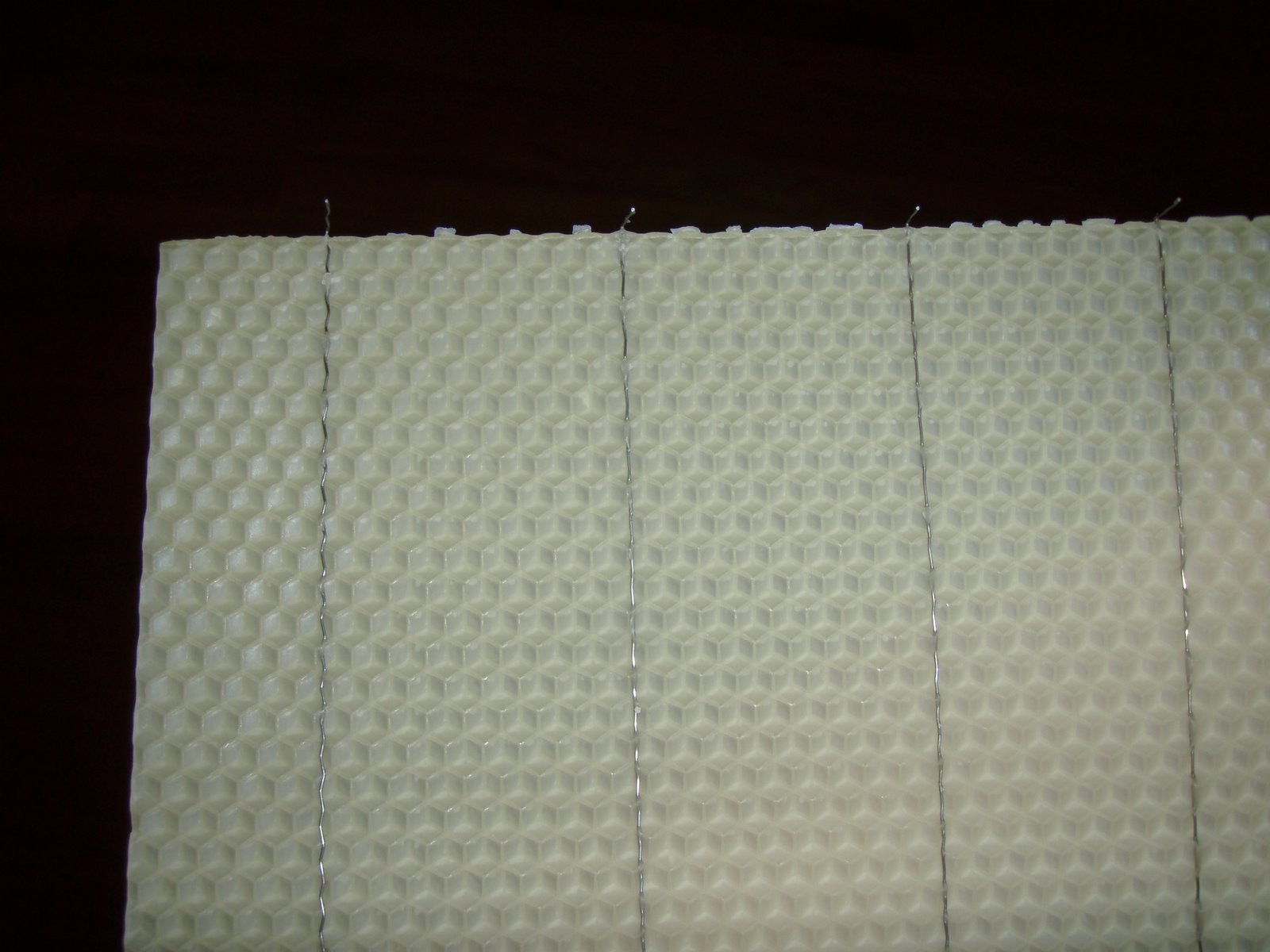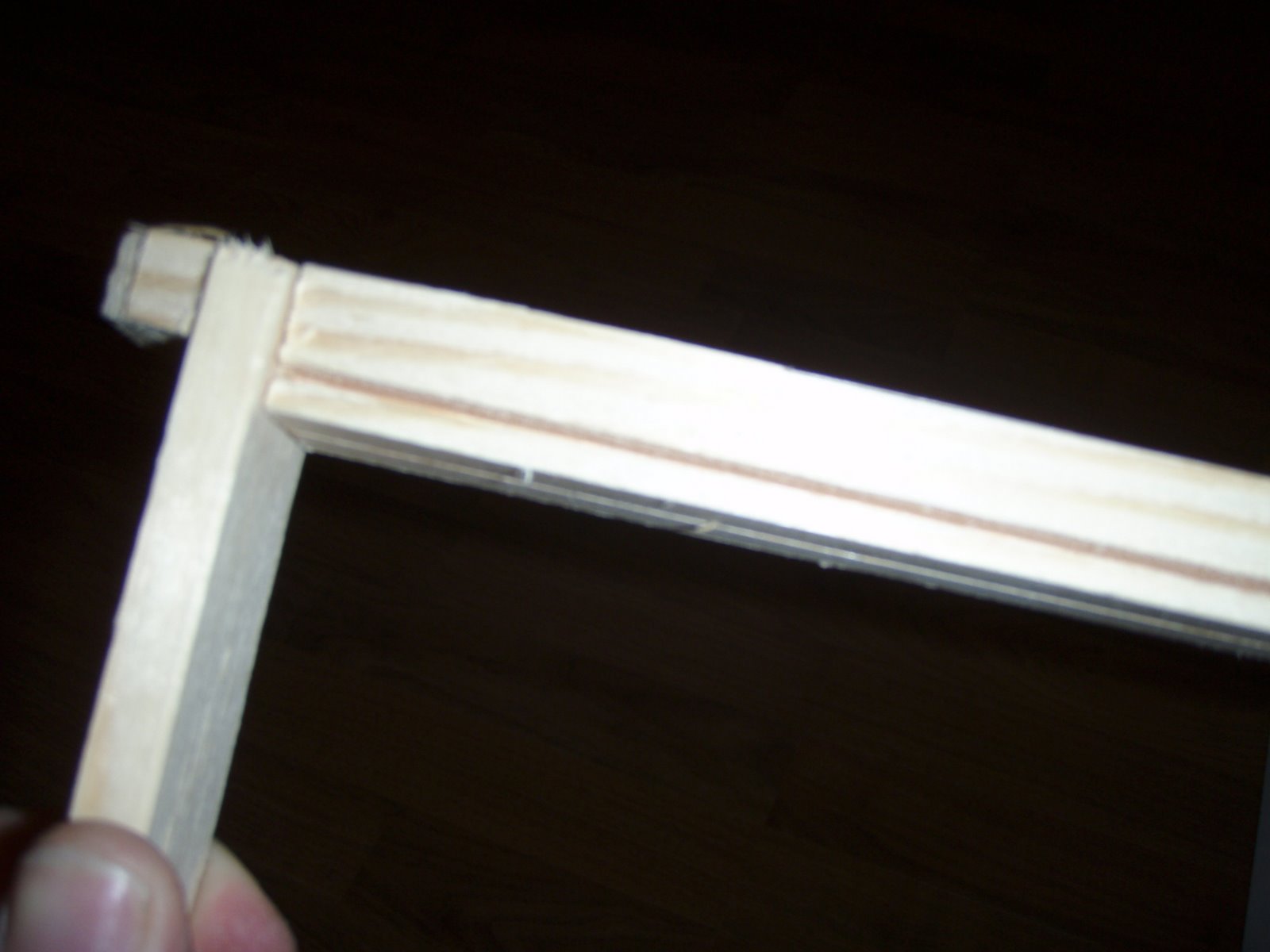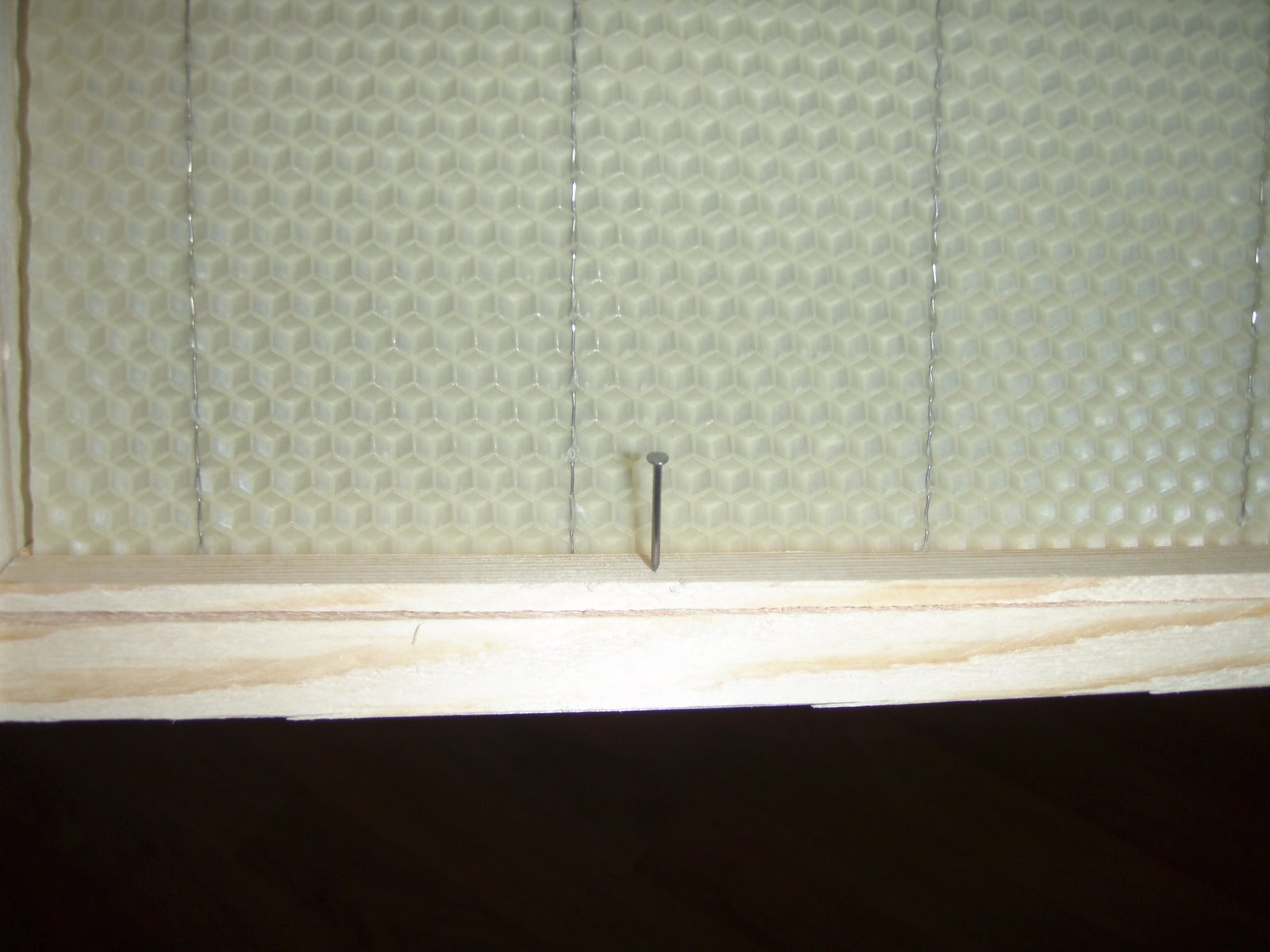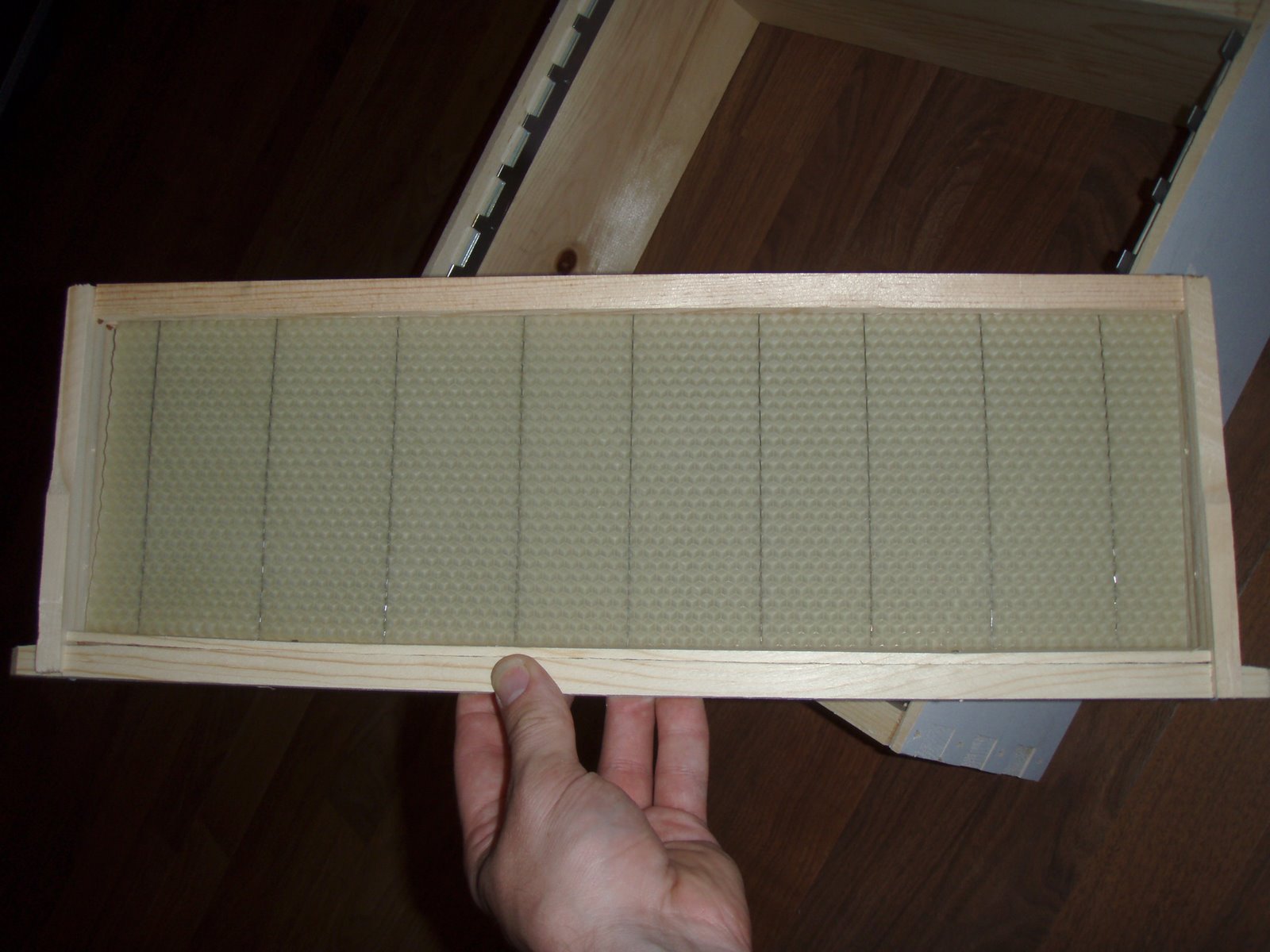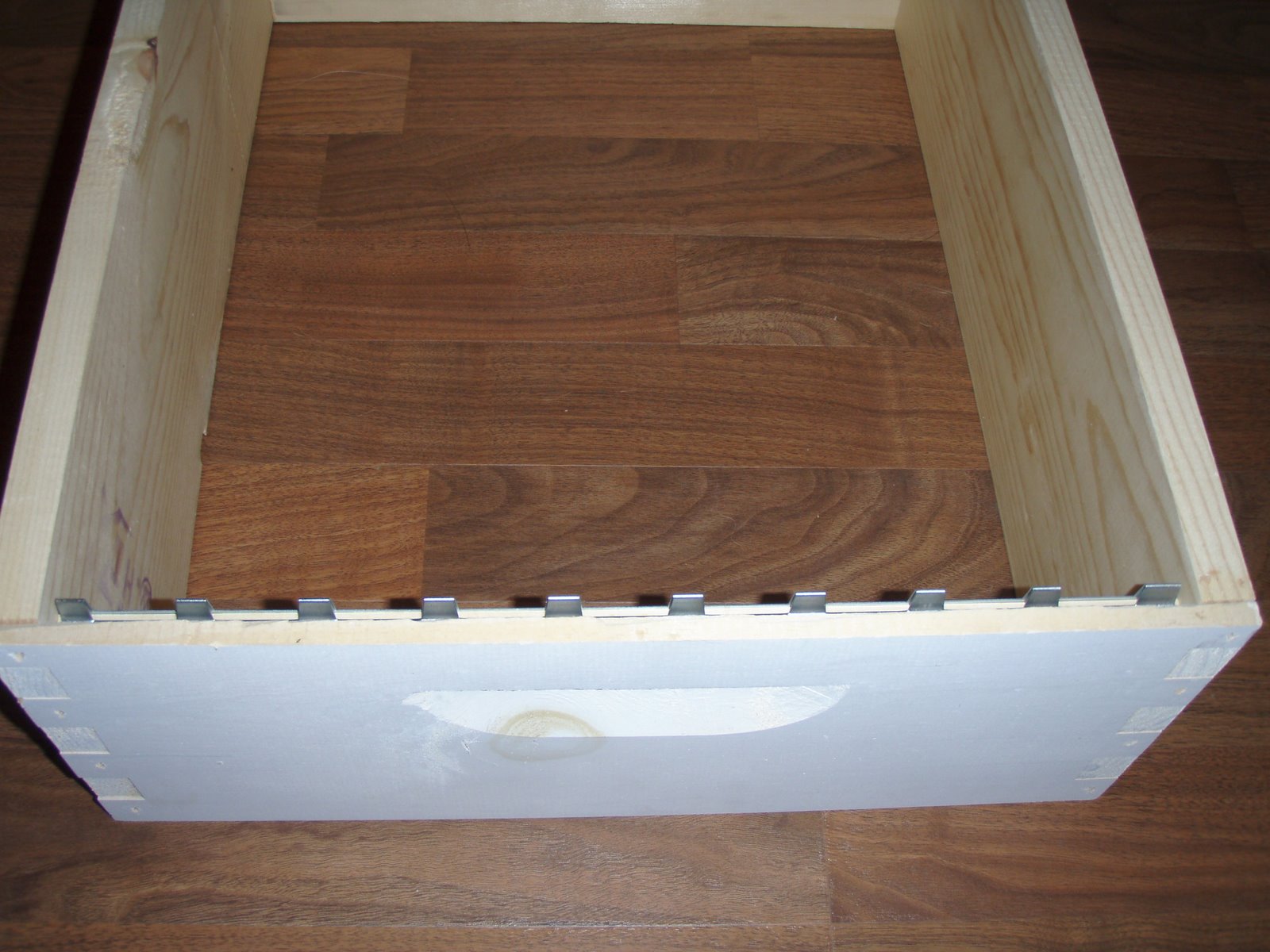Suuup It Up!
The bees have been very busy, and their population numbers have practically exploded. Both hives are each occupying about 75% of their total hive space now. I think this coming weekend, it’s time to put on the first honey super.
Honey supers are less deep (or more shallow) than the hive bodies. That’s because once all the frames are packed with honey, they will be very, very heavy. This matters, because during inspections, you have to be able to lift each of the supers and move them around.
Some background on hive equipment:
A standard Langstroth movable frame hive body (“deep body”, or “deep super”) is 9 and 9/16 inches inches deep, the frames that go inside of it are 9 and 1/8 inches deep. While the bees will store some honey in the deep bodies, there will be plenty of frames full of brood, pollen, and empty cells, so the overall weight of the box will never be massive.
Most people are not crazy enough to use the deep bodies for honey production. Fully loaded, they would become so heavy to make them nearly unmanageable.
Some people will however use three medium supers as hive bodies (instead of two deep bodies), so all the equipment they use is one standard size. A “medium super” or “western super” is 6 and 5/8 inches deep, the frames are 6 and 1/4 inches deep. I prefer the two deep supers over the three medium supers, because that’s ten less frames to inspect each time.
For completeness sake, I should mention that there are also two even smaller sizes of supers, the “shallow super” (5 and 3/4 inches deep), and the less common “comb super” (4 and 3/4 inches deep).
When I purchased my equipment, I opted for medium supers. I got a total of four, two per hive. While I was able to get all the frames, the supplier was out of foundation that fit the medium frames. So in my recent order from Dadant & Sons, I included some sheets of medium, all bee’s wax foundation.
It has metal wires embedded for stability, but no plastic center like the stuff that came with my deep frames. I read that the bees are supposed to like the all wax foundation better, although they took pretty readily to the wax covered plastic stuff.
We plan on collecting and melting down the bee’s wax after honey extraction, the all wax foundation will be easier to deal with than the plastic.
Since the frames I got didn’t have the foundation pre-installed, I had some preparation work to do.
The wedge that will hold the foundation in place is mostly cut from the top bar, but still needs to be separated.
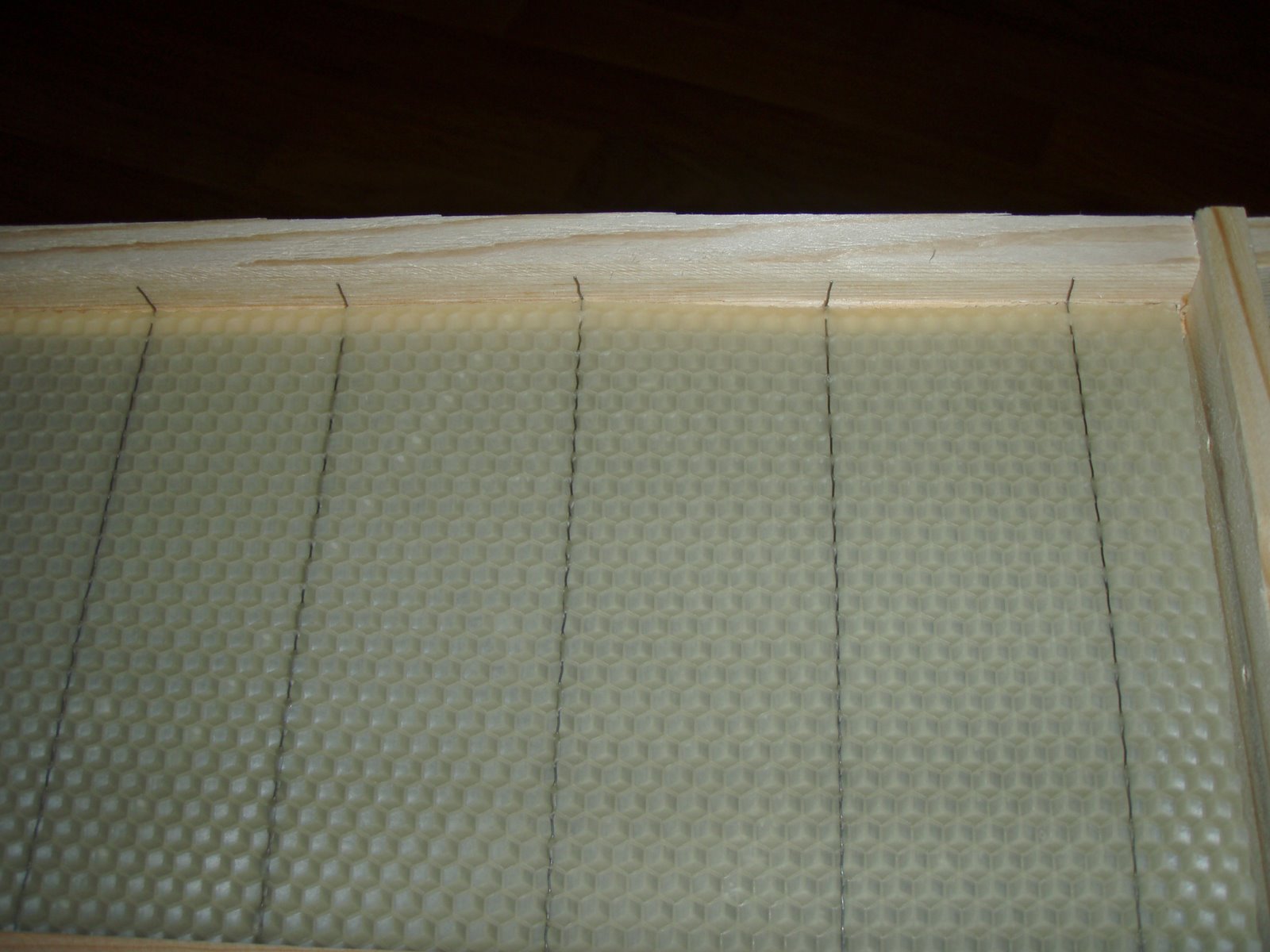
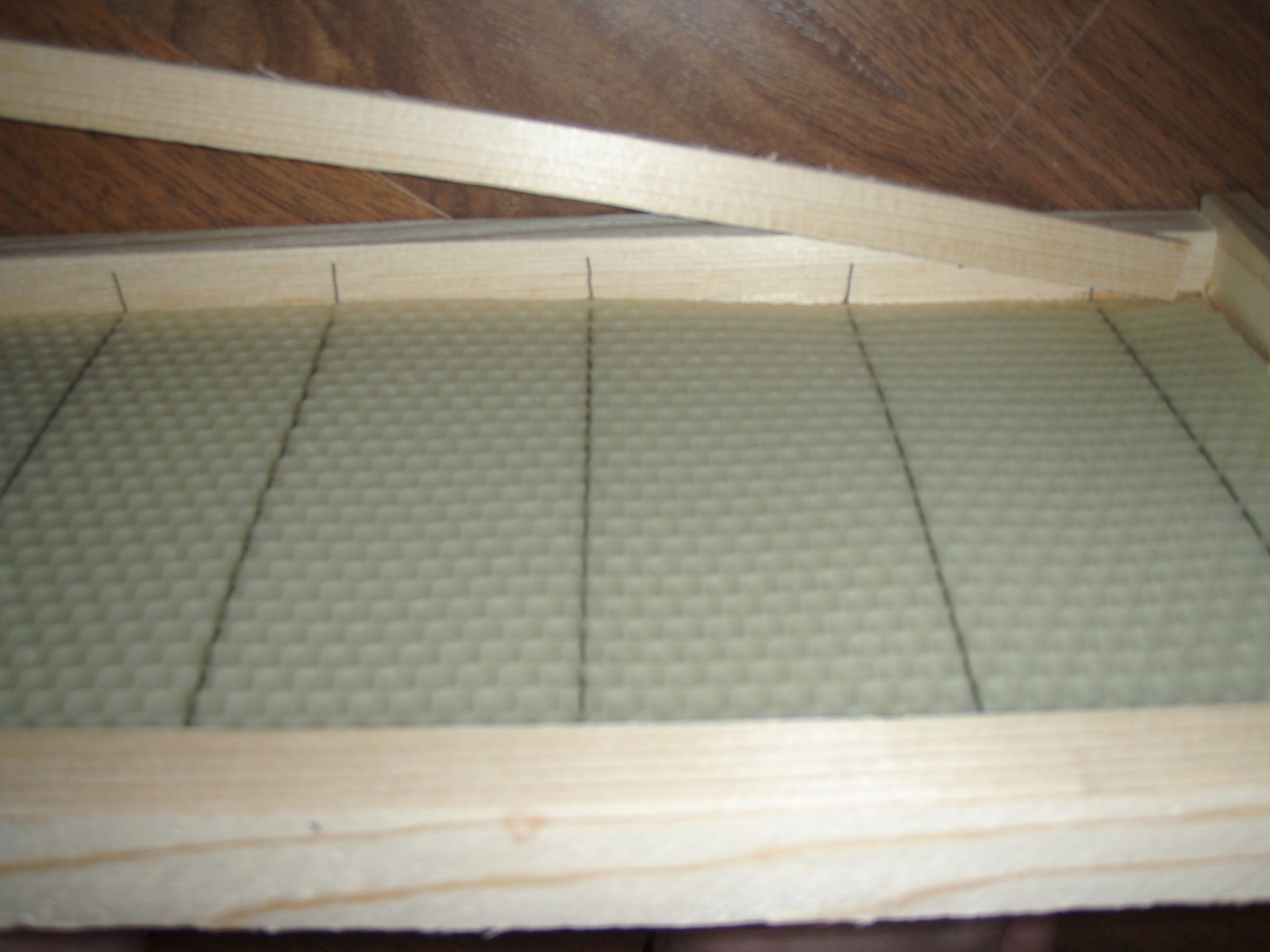
Here I am putting the wedge I had previously separated into place. It will hold down the bent wires and thus the foundation in place.
In order to assure proper spacing, I got special metal bars with notches that get attached to the top inside of the honey super.
